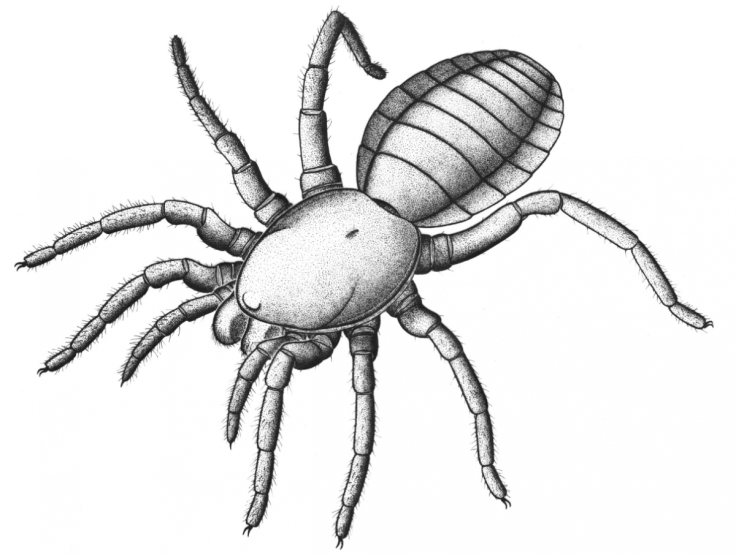305-million-year-old arachnid sheds light on spider evolution

A 305-million-year-old species of arachnid has been discovered, and it is the closest relative to spiders ever found that is not actually a true spider. The species is very similar to a modern day spider - however, it lacked the ability to produce the silk for webs.
The research published in Proceedings of the Royal Society B describes Idmonarachne brasieri and sheds light on the origins of spiders for which information is limited.
The researchers from the University of Manchester travelled to Montceau-les-Mines, France, to investigate the origin of spiders. The commune site is known for housing one of the oldest reported spiders ever discovered. The scientists discovered a fossil preserved in ironstone, allowing each tiny detail of the species to be examined.
"Including the legs, [its size] would have been between 15 and 20mm," Russell Garwood, lead author of the research told IBTimes UK. "Not huge."
The fossil was recreated through computerised 3D technology, allowing detailed study of this new fossilised arachnid. This method identified the similarities between Idmonarachne brasierie and the modern day spider.

Although they look similar, the newly found I.brasieri lacks one key characteristic of spiders; the ability to spin webs. It was therefore categorised as a sister species to the modern spider.
The researchers are now continuing to study arachnids from a similar time period, in order to find fossils with spinnerets - the organ used in spiders to create the silk for spinning webs. "This is part of an ongoing effort to better understand the early evolution of spiders by looking at the fossil relatives," said Garwood.
© Copyright IBTimes 2025. All rights reserved.






















